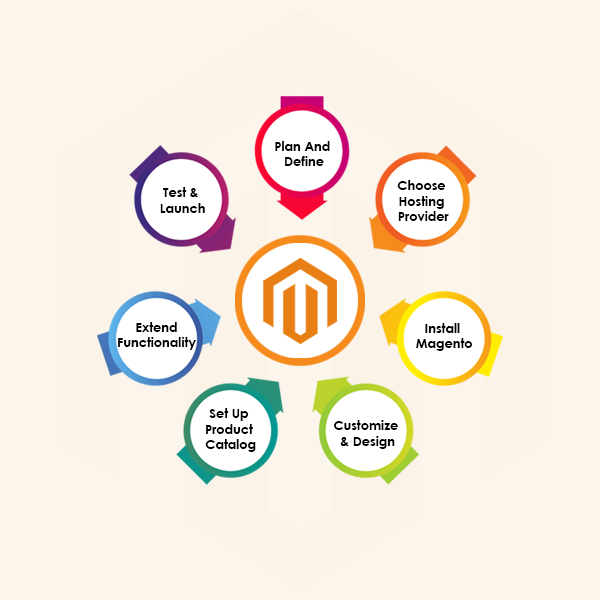How to Build a Magento Website in 7 Steps - Connect Infosoft
Everyone understands that creating a Magento site necessitates code. We've written dozens of articles on how crucial it is to have a trustworthy specialist create your Magento website. While this is still true, it may no longer be as tough. The most recent version of Magento Open Source 2.4.3 includes an intuitive drag-and-drop page builder and you may be able to create one on your own.
Building a Magento website involves several steps to ensure a successful and well-functioning e-commerce platform. Here are seven general steps to guide you in building a Magento website:
1. Plan and Define Requirements:
- Identify your target audience, products/services and business goals.
- Determine the scope of your website, including the number of products, categories and any specific features or functionalities required.
2. Choose a Hosting Provider:
- Select a reliable hosting provider that supports Magento's system requirements.
- Consider factors like performance, security, scalability and support.
3. Install Magento:
- Download the latest version of Magento from the official website.
- Follow the installation instructions provided by Magento, ensuring compatibility with your hosting environment.
- Configure the database and essential settings during the installation process.
4. Customize and Design:
- Select or create a visually appealing and user-friendly theme for your Magento website.
- Customize the theme to align with your brand identity and enhance the user experience.
- Configure the layout, typography, colors and other design elements to create a cohesive and professional look.
5. Set Up Product Catalog:
- Create categories and subcategories to organize your products.
- Add product attributes, such as size, color and price, as per your requirements.
- Upload product images, descriptions and other relevant information.
- Optimize product pages for search engines (SEO) by utilizing appropriate keywords and meta tags.
6. Extend Functionality with Extensions:
- Explore the Magento Marketplace for extensions that provide additional features or integrations.
- Install and configure relevant extensions based on your business needs, such as payment gateways, shipping modules, or marketing tools.
- Ensure compatibility and quality by reviewing user reviews and ratings.
7. Test and Launch:
- Perform thorough testing to identify and fix any bugs or usability issues.
- Test website performance, responsiveness, navigation and functionality, including the checkout process.
- Implement security measures to protect customer data and transactions.
- Once satisfied with the testing results, launch your Magento website to the public.
Remember, these steps provide a general overview and the actual process may vary depending on your specific requirements and expertise. It's recommended to seek professional assistance or consult Magento documentation for detailed instructions during the development process.
TAGS: How to Build a Magento Website in 7 Steps, Looking for Magento e-Commerce Development Services in India, Magento e-Commerce Dev Team in India, Connect Infosoft, Backend Magento Team API Development, Looking for Magento Developer, Looking for Magento Dev Team, Magento Development Company


